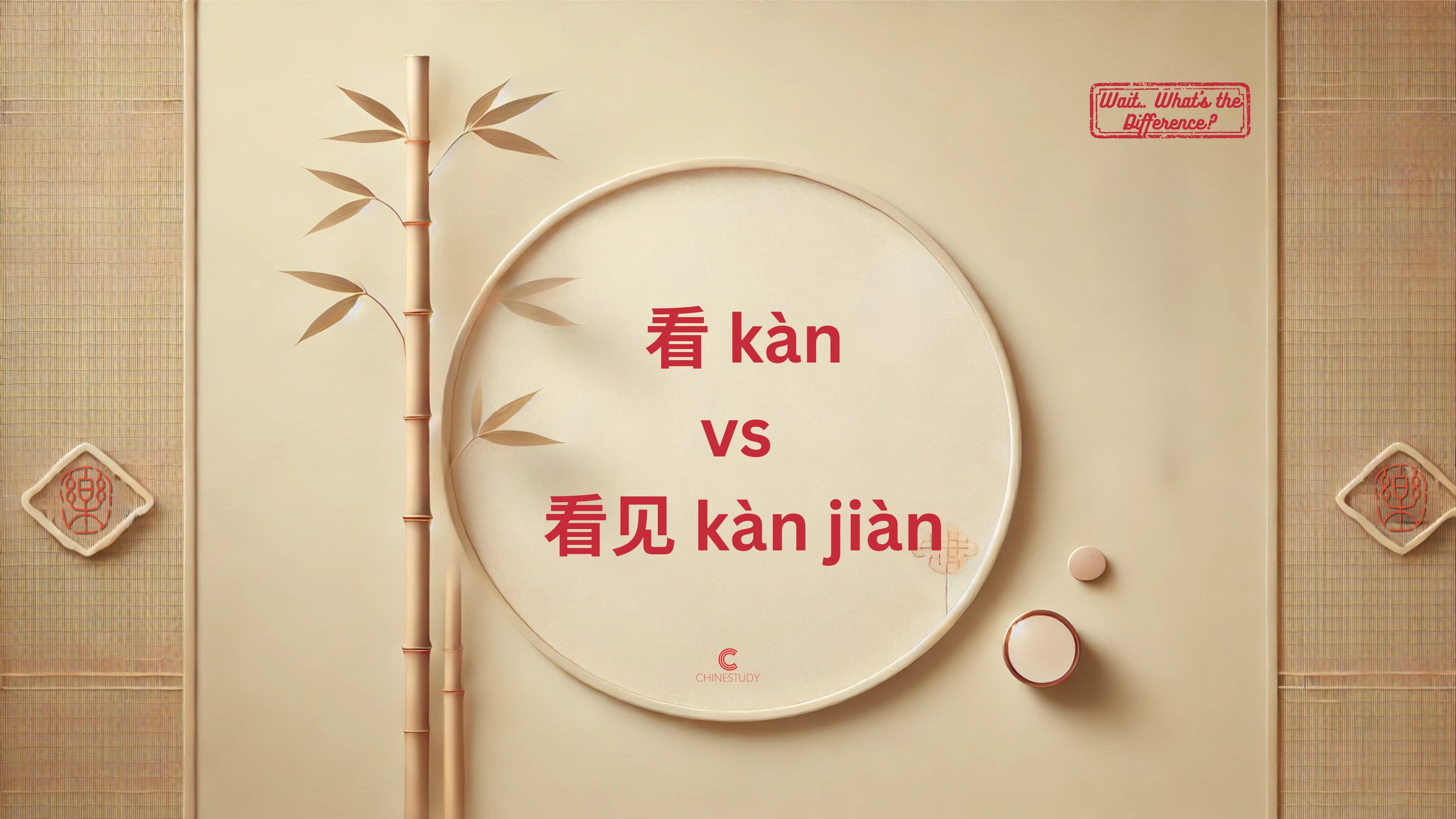🧐 看 kàn vs. 看见 kànjiàn – What’s the Difference?

📝 看 kàn vs 看见 kànjiàn
Ever wondered if you’re using 看 (kàn) and 看见 (kànjiàn) correctly? These two words may look similar, but they have different meanings.
Let’s clear up the confusion today!
🔍 Breakdown
- 看 (kàn): To look, watch, or read (focuses on the action).
- 看见 (kànjiàn): To see or notice (focuses on the result).
💬 Examples
看 (kàn):
- 我喜欢看电视。Wǒ xǐhuan kàn diànshì。 ➔ I like watching TV.
- 他在看地图。Tā zài kàn dìtú。 ➔ He is looking at the map.
看见 (kànjiàn):
- 我看见他了。Wǒ kànjiàn tā le。 ➔ I saw him.
- 你看见我的钥匙了吗?Nǐ kànjiàn wǒ de yàoshi le ma? ➔ Did you see my keys?
💡 Tip
📌 Use 看 (kàn) when you talk about the action itself (like reading or watching something).
📌 Use 看见 (kànjiàn) when talking about seeing. It’s not just about looking—it’s about the result of seeing something successfully.
🧠 Interactive Practice
Choose the correct word: 看 (kàn) or 看见 (kànjiàn)
1. 我昨天___了她。 (Wǒ zuótiān ___ le tā。)
✅ Correct answer: 看见 (kànjiàn) – It emphasizes that you successfully saw her.
2. 你喜欢___书吗? (Nǐ xǐhuan ___ shū ma?)
✅ Correct answer: 看 (kàn) – It refers to the action of reading or watching.
3. 你___我的包了吗? (Nǐ ___ wǒ de bāo le ma?)
✅ Correct answer: 看见 (kànjiàn) – You are asking if someone saw your bag, focusing on the result.
✍🏻 Summary
- 📌 看 (kàn) focuses on action.
- 📌 看见 (kànjiàn) emphasizes the outcome.
Understanding 看 (kàn) and 看见 (kànjiàn) will help you communicate clearly and naturally.
Keep practicing these words, and you'll quickly 看见 improvement!
Thank you for subscribing!
Have a great day!